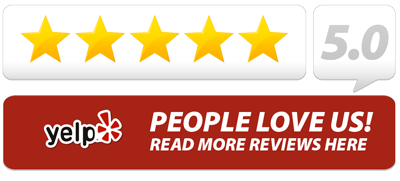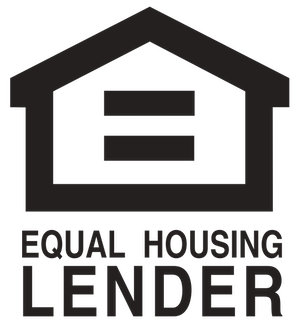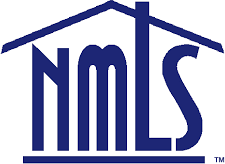Business growth is an eventuality that happens in every company’s lifecycle. The challenge many entities face is sourcing finances to fund their expansion plans. Various options are available to finance business growth. You have the choice of using equity or debt financing. Equity financing is the use of shareholder’s investment as capital to offer capital for the business. Debt financing, on the other hand, is using credit as a capital source for your business.
Debt has become the most preferred source of financing. It is reliable and does not dilute the ownership structure in an entity. One such credit facility is the commercial and industrial loan. These are credit package offered to businesses to finance their expansion plans. These loans are short-term in nature and are secured by collateral. Money Lender Loans offers commercial and industrial loans to clients in and around Orange County, CA. Our loans are tailored to assist businesses to meet their growth plans. However, before accessing these loans, it is important to understand their structure and what they are all about.
Understanding Commercial and Industrial (C&I) Loans
Three aspects make commercial and industrial loans; the financing, reason for funding, and the repayment period. The amounts you apply for as commercial and industrial loans are only offered to corporations and businesses. Individuals cannot access this financing. Companies ask for these funds as working capital for the expansion projects, or they can be used as capital expenditure to acquire equipment and machinery to improve the business’ operations. The last aspect of the C&I loan is the repayment period. In most cases, the loan is offered as a short-term credit facility.
In offering the loan to entities, the lending institution seeks to provide financing to have the sums paid back in full within a stipulated time. Failure to which, the collateral offered will be taken up by the lending institution and used in any way the creditor deems fit with the aim of recovering the sums owed to them.
Businesses require working capital from time to time. Simply put, working capital is the difference between a company’s current assets and its current liabilities. The money is a measure of the company’s liquidity level that paints a picture of its operational efficiency as well as its short-term business health. An excellent working capital is when a company has more current assets than its current liabilities. This is the only way it can meet its short-term maturing obligations such as paying their creditors. The commercial and industrial loans are offered to ensure that the company gets funds to solve the cash crunch and settle the debts that fall due in less than a year.
The interest rates levied on these loans are short-term based. They are tied to bank prime rates or LIBOR. Prime rates are interest charges levied on customers that are pegged on the creditworthiness of the client. LIBOR, on the other hand, is an interest rate used by global banks when they borrow money from each other. Any assessment and determination of what interest rates are to be charged depending on the borrower’s default risk. The higher the default risk, the higher the interest rate charged.
Who is the Commercial and Industrial Loan Best Suited For?
In any given market, there are large corporations and the small and medium-sized companies. Whenever the large corporations need working capital, their most significant source of funds is equity. They can get the funding they need through the sale of shares. They can either offer shares to the public or private investors in exchange for cash. In some cases, they split the shares and request the existing shareholders to purchase the new split shares. This move helps them generate the needed working capital.
Small and medium-sized entities are limited in terms of using shareholding to generate working capital. More often than not, the owners in these entities are not willing to let go of their stake in the company. Therefore, most of these firms end up going for commercial and industrial loans to source funds to meet their working capital needs. As statistics show, the majority of the entities in this industry are small and medium-sized firms.
The challenges of working capital are often experienced when a firm changes its operations to either increase their output or to accommodate their growth plans. These challenges are then considered to be the short-term teething problems that are corrected using short-term financing like commercial and industrial loans.
In other instances, the loans are used to finance acquisition and merger plans. Your business may want to achieve a position of strength against its competition. To do this, you may implement an acquisition strategy that involves buying up a smaller company and combining efforts to take on the competition. In some situations, mergers may be the ideal path to take. Merger plans involve your company teaming up with another to operate as one. Such business deals require funding that may not be readily available. That is why commercial and industrial loans become a good choice.
Aspects You Need to Have Satisfied Before Accessing Commercial and Industrial Loans
Lenders of the C&I loans will need clarity on some issues if they are to offer credit. It is a move to secure their finances and ensure that it is not lost should the borrower fail to pay. They include;
Collateral
Collateral is an asset that you offer against the loan. Its value is equivalent to the sums you take out as a loan. Collaterals are securities that the creditor can sell and receive the amounts you owe should you fail to meet your repayment obligation. The collateral can be an asset within your business that can be attached to the loan. The list is inclusive of cars, machinery, buildings, or accounts receivables, or debtors.
The collateral value affects the value of the loan you can access. It is common practice for lenders to request an assessment of the collateral. In so doing, the lender seeks to get the actual value of the property to determine how much they are likely to get should they sell the asset. Whether an asset qualifies as collateral is solely a creditor’s decision. They will use the asset’s value in their overall decision of what interest rates to charge you.
While applying for the C&I loans, you may come across the term loan-to-value ratio. It is a ratio showing the loan value against the worth of the asset. The ratio depends on the lender’s discretion and the type of collateral offered. Take a look at the following examples of loans you can access against the item you offer as collateral.
Commercial Real Estate Loans
These are sums offered to develop, purchase or to upgrade a piece of commercial real estate property. Lenders provide a loan that is up to 80 percent of the collateral value.
Small Business Administration Loans (SBA)
SBAs are offered in one of three ways. The first is offered up to 80 percent of the value of the real estate. However, undeveloped land offered as collateral can only get you 50 percent of the SBA loans. If you present new equipment as collateral, you can access up to 50 percent of the equipment’s value as a loan. In some cases, you may offer inventory as collateral. In so doing, you only access 20 percent of the inventory’s value as a loan. The sums accessed can be used to finance your company’s operations.
Equipment Loans
These loans have a value that ranges from 50 to 60 percent of the price of the equipment you offered as security for the loan. Lenders insist on invoices for the equipment’s purchase to verify their ownership.
Inventory Loans
The sums offered by the lender in inventory loans has inventory attached as the security. If this is your situation, expect to have an amount to the tune of 50 percent of the value of your stock. The rate is low because it is often difficult for lenders to liquidate inventories to recover the sums defaulted.
General Purpose Loans
Any loans applied for in this category offer cash or any other security as collateral. In so doing, the applicant accesses up to 95 percent of the value of the collateral.
Invoice Financing or Accounts receivables
Non-payment of account receivables is the only challenge that may affect the amounts you can access in C&I loans. If the risk is high, the loan sums decrease. If the risk is low, the amount offered in the loans is higher. However, the operating value of the loans in the market is 75 to an upwards of 90 percent of the value of the accounts receivables.
Personal Guarantee
It may be difficult to offer a security for a C&I loan. If you are in such a situation, you can use your assets as a guarantee that you will honor the repayment of the amount applied for in full. In personal guarantees, should the business fail to repay the sums owed, the lender can use your assets to offset the amount due. A personal guarantee is required if the company is a separate legal entity.
In most cases, startups are the entities that opt for personal guarantees as collaterals. The lender will require all owners whose stake in the company is 20 percent or more to offer a personal guarantee against the sums applied for a Small Business Administration loans (SBA). The personal guarantee is a way to ensure that the owners of the startup have a responsibility to the loan agreement. This way, they will not walk out and leave the lender at a loss should the business fail.
Co-signer
A co-signer to the business loan ensures that the loans will be paid for in full should the business fail to meet its obligations to the lender. A co-signer can be used to guarantee the sums taken up as loans if the above options are not available to the owner. Lenders require assurances that the amounts they loan out are going to be paid in full. This is why they will seek an assurance from the co-signer in the form of additional information or collateral.
In the event the ender requests for a co-signer to the loan, you should get someone whom you can trust and a person who is willing to pledge their property as security for your business’ loan. Further, your co-signer should have an excellent credit rating.
Co-Signer responsibilities are not limited to signing the loan application form. They will be required to offer assets as collateral for the sums loaned out to the business. They too share in the responsibilities of the debtor. In the event the company fails, the assets attached as collateral by the co-signer will be sold, and the proceeds used to clear the outstanding balance of the loan.
Documents Required During the Application of a C&I Loan
All loans need two issues to be presented; the amount applied for in the credit and the loan payback plan you have in place. It is with this in mind that lenders ask applicants to provide business plans to determine what loan amounts they qualify for. Financial statements asked for by the clients offer perspective on how they intend to repay the loan.
Business Plans
Business plans are more like company blueprints. They offer details of how the company will operate and finance its programs. Therefore, a good business plan, among other things needs to have a working budget, plans for its continued growth, and sources of its capital structure. All this information goes to determine how much money your business can access.
A lender should be able to clearly understand the company goals, their offering to the market, their financial situation, and the company’s growth potential.
Financial Statements
It is critical to ensure that all the information provided about your business’ financials is truthful. Information about your break-even analysis, profit margins, and projections, sales and revenue margins are all details that should be well articulated in these financials. A comprehensive financial statement should have the following in its structure:
- A startup budget that shows what capital you intend to use or have used to start the business
- Startup cost worksheets that give a detailed account of why your business needs the money, that is, the intended use of the funds your business receives
- Break-even analysis that offers perspective as to when your business is likely to make a profit
- A balance sheet that shows your business’ capital structure, its assets, and liabilities
- Income statement in which the lender should see the expenses that the company incurs against the income it receives
- The sources and use of funds already received. The lender will have an idea of the company’s working capital
Advantages and Drawbacks of using Commercial and Industrial Loans
The value offered by the C&I loans define the advantages of using the loans in your business. C&I loans are easily accessible when compared to equity financing. All you need is proper documentation as well as collateral and apply for a loan. Equity financing, on the other hand, requires summoning of the shareholders or floating of shares in the market in the hope that investors will buy them. Raising through working capital is more complicated than seeking credit. It is why commercial and industrial loans are the preferred capital source.
C&I loans have one downside. They are short-term financing methods. This, therefore, means that they are to be repaid in full within the year of application and receipt of the sums. With short-term financing, interest rates are high, and this is the case with commercial and industrial loans. The interest payments take away the cash the business would have otherwise used to finance its operations.
Loans can be an asset to the business if adequately utilized. They can also be a problem for the organization if misappropriated or channeled into areas that do not generate revenue. Prudence is called for when seeking credit facilities. Be sure that you have the correct revenue projections in line with the sums you ask for. The avenue you channel the funds to should also offer a guarantee that they will generate the income needed to offset the loan. This is the best way to ensure you get the full value that the loan can offer to your business.
Find a Lender Offering Commercial and Industrial Loans Near Me
Profitability is a crucial business aspect that cannot be undermined. Financing in business enables the business to tap into its full profitability potential. Therefore, it calls on all business owners to consider a financial method that will help their businesses continue operating with minimal interruptions, which something companies that lack adequate finances can attest to. Commercial and industrial loans offer a solution to these challenges in businesses. The Money Lender Loans team based in Orange County, California, is ready to provide a package suited for your business needs. All you have to do is give us a call on 949-409-4372 and let us help your company achieve its full potential.






